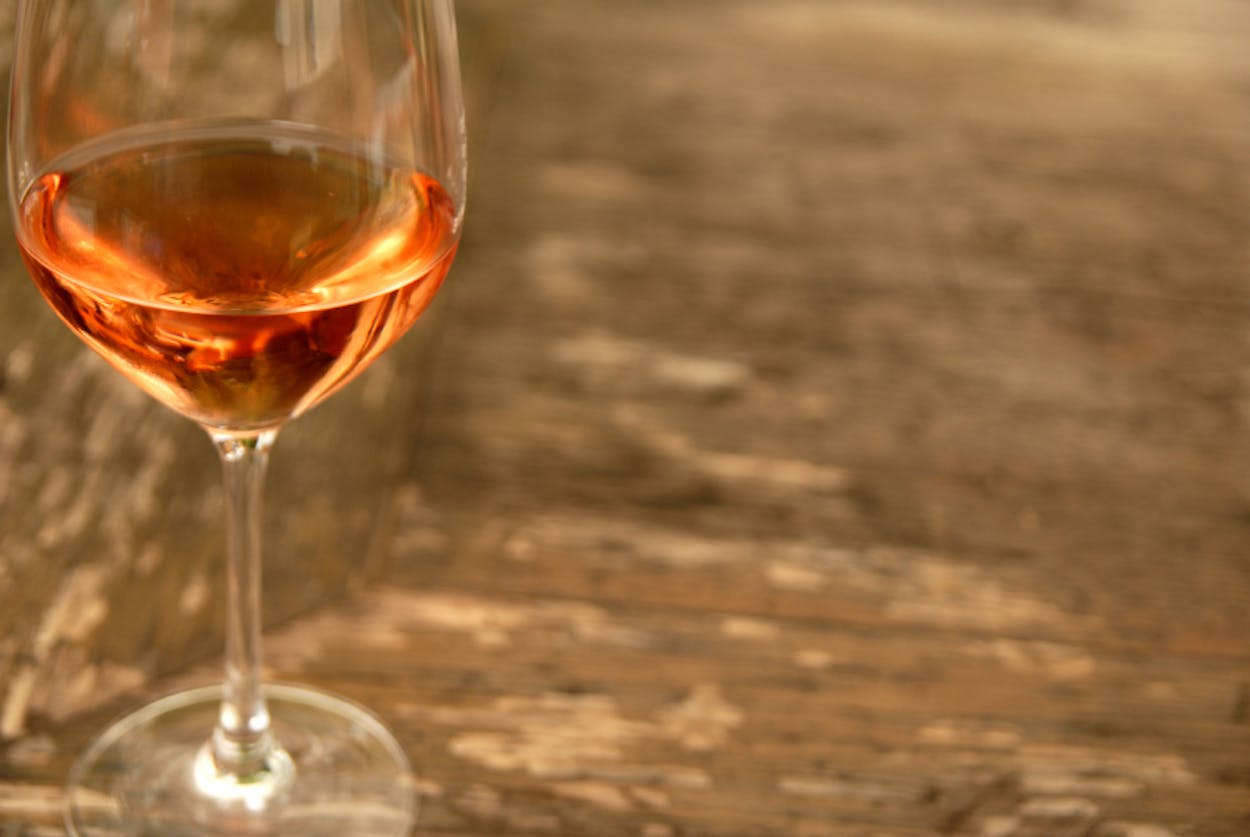As you mill about the wine aisles looking for the perfect wine to sip this summer season, we encourage you to think pink—as in rosé wine.
To be clear, we’re not talking about the often cloyingly sweet and overly fruity “white zinfandel” or “blush” wine that flooded American retail shelves in the eighties. Those wines were the result of a mega-wine marketing strategy out of California that enamored many wine palates across the country. But we won’t judge if that’s the first thing you tend to reach for in the hot summer months, don’t fret—your personal taste should dictate what you drink. But we’d like to challenge you to try something different.
Rosé is one of the oldest types of wine produced in the world. It is made in a variety of ways, but among the most accepted methods is to let red grapes spend a short amount of time with their skins before beginning the process of fermentation. This imparts a little bit of color—as well as a little added structure to the flavor of the wine—shades ranging from the faintest whisper of pink or corral-kissed salmon to a lush cherry or watermelon hue. The color of the wine often misleads people into thinking this is a sweet varietal, but the best examples of rosé are usually fruity on the nose and dry on the palate.
Some of the world’s greatest rosé’s come from warm weather climates such as Southern France, Spain, and Italy. Considering Texas has had great success with many of the grapes that hail from these regions, we found a few wineries in the state who produce rosé wines in similar European styles. A couple of weeks ago, I sat down with a group of seven Austin sommeliers for a little Texas Rosé Roundup. I asked self-proclaimed rosé enthusiast Nathan Prater, advanced sommelier and wine director for the Driskill Grill and Hotel, to lead us through this experimental tasting.
“What I love so much about rosé is that it’s one of the great universal pairing wines regardless of where it comes from. It works with a variety of foods,” Prater said. “And all the great wine producing countries make fantastic rosés including France from the Rhone, Provence and Languedoc regions as well as Spain and Italy. It’s a wine that begins its life as a red and moves into a white wine and takes on the best characteristics of both.”
We tasted five Texas rosés against three from the south of France. All are made with grape varietals that do well in both regions: Mourvedre, Grenache, Syrah, and Cinsault. (A couple of Texas wines also had blends with Tempranillo and Sangiovese.)
After a thorough tasting with discussion on each wine in between, it was enlightening to see the results. It was clear that the French are still paving the way for how rosés should be handled, and rightfully so, considering they’ve been perfecting this type of wine for hundreds of years. Of the five that led the pack, three French wines were included: Mas des Bressades Cuvée Tradition 2012 (Costieres de Nimes); Bieler Pere et Fils 2012(Coteaux de Aix-en-Provence); and Domaine Houchart Sainte Victoire 2012 (Cotes de Provence).
But there were two Texas wines that are definite contenders for claiming permanent refrigerator space this summer:
Pedernales Cellars Texas Dry Rosé, 2012
A blend of Tempranillo and Sangivese, this wine is a deep shade of rosy pink with bright aromas of strawberry, raspberry, lemon zest, and a hint of herbaceousness. The palate is fruity all the way through with only a hint of residual sugar. The balanced acidity allows that fruit to shine, but still lifts it from the palate with a refreshing crispness.
While the Pedernales Cellars Rosé would be great to sip on its own, it would pair beautifully with grilled pork tenderloin.
$20. Available at the winery and online.
McPherson Cellars Dry Rosé Vin Gris, 2012
Relying on Southern Rhone grapes, Kim McPherson produced this wine with a blend of Cinsault, Mourvedre, and Grenache. A fare shade of pink, the nose on this wine offers up hints of cherry, raspberry and a kiss of cotton candy.
Just as most French rosés present a crisp, dry finish, the McPherson rosé presents a clean, fruity finish with a little bit of minerality that would make a perfect pairing for oysters or grilled white fish. But the round fruit characters in this wine could also stand up well to a nice juicy burger.
$14. Available at the winery and online.
While these are the wines that impressed us most, there’s no reason you shouldn’t taste your way through Texas rosés this summer and see which one tickles your fancy. Below is a list of other Texas rosés you may want to check out:
Becker Vineyards Provençal Rosé, 2012
Duchman Family Winery Dry Rosé, 2012
Fall Creek Vineyards Rosé of Lenoir, 2012






